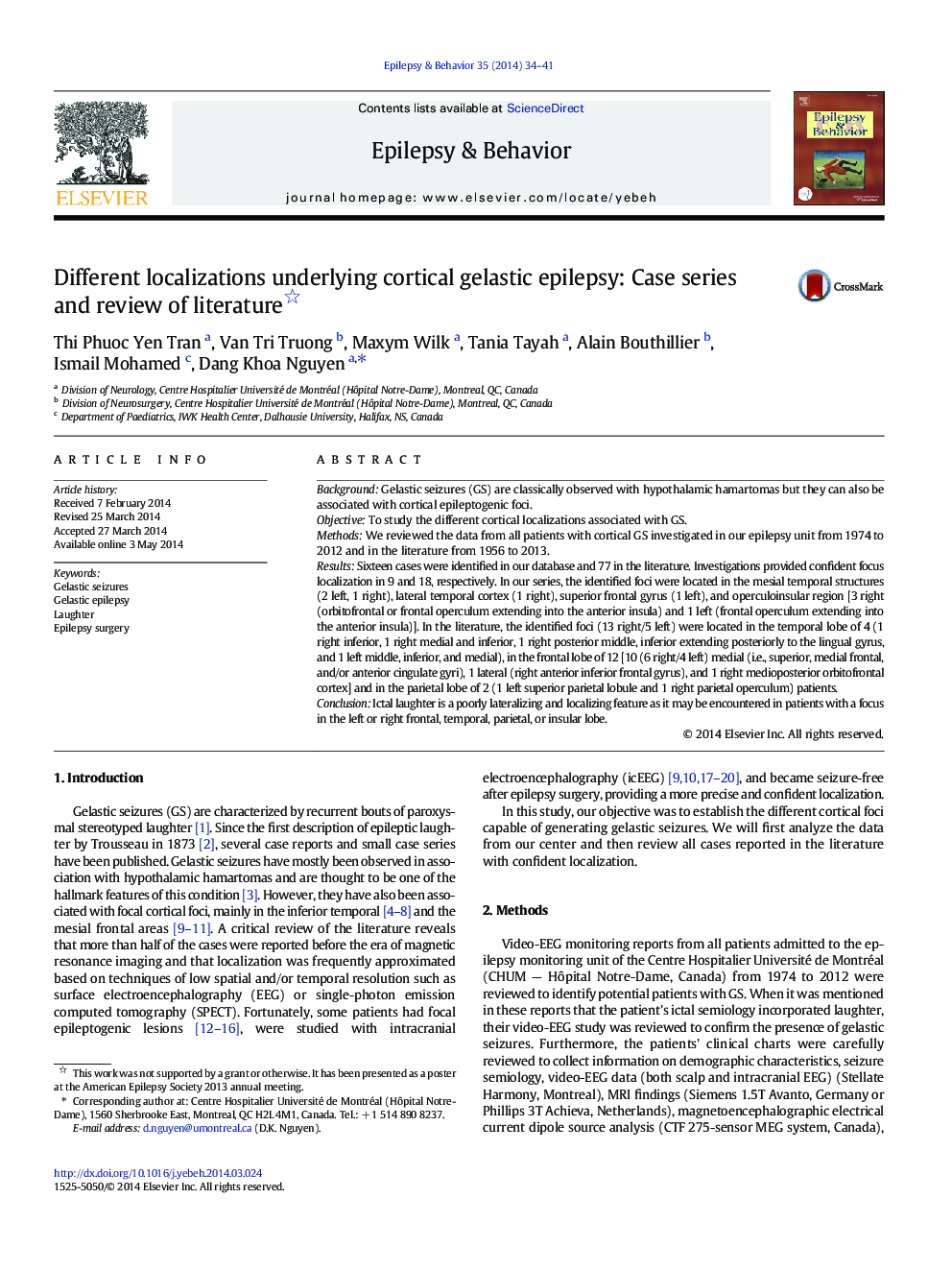| Article ID | Journal | Published Year | Pages | File Type |
|---|---|---|---|---|
| 3049632 | Epilepsy & Behavior | 2014 | 8 Pages |
•Ictal laughter is seen with not only hypothalamic hamartomas but also cortical foci.•We show that it can occur with a temporal, frontal, parietal, or insular focus.•Ictal laughter is a poorly lateralizing and localizing feature.
BackgroundGelastic seizures (GS) are classically observed with hypothalamic hamartomas but they can also be associated with cortical epileptogenic foci.ObjectiveTo study the different cortical localizations associated with GS.MethodsWe reviewed the data from all patients with cortical GS investigated in our epilepsy unit from 1974 to 2012 and in the literature from 1956 to 2013.ResultsSixteen cases were identified in our database and 77 in the literature. Investigations provided confident focus localization in 9 and 18, respectively. In our series, the identified foci were located in the mesial temporal structures (2 left, 1 right), lateral temporal cortex (1 right), superior frontal gyrus (1 left), and operculoinsular region [3 right (orbitofrontal or frontal operculum extending into the anterior insula) and 1 left (frontal operculum extending into the anterior insula)]. In the literature, the identified foci (13 right/5 left) were located in the temporal lobe of 4 (1 right inferior, 1 right medial and inferior, 1 right posterior middle, inferior extending posteriorly to the lingual gyrus, and 1 left middle, inferior, and medial), in the frontal lobe of 12 [10 (6 right/4 left) medial (i.e., superior, medial frontal, and/or anterior cingulate gyri), 1 lateral (right anterior inferior frontal gyrus), and 1 right medioposterior orbitofrontal cortex] and in the parietal lobe of 2 (1 left superior parietal lobule and 1 right parietal operculum) patients.ConclusionIctal laughter is a poorly lateralizing and localizing feature as it may be encountered in patients with a focus in the left or right frontal, temporal, parietal, or insular lobe.
